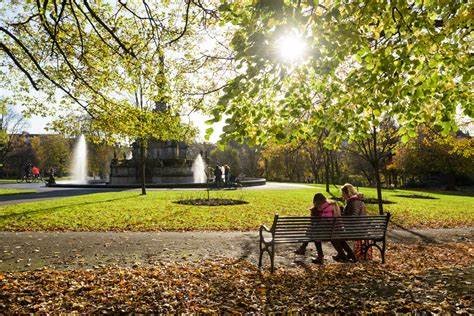Urban forest: Not a contradiction but a critical resource

URBANA, Ill. — By definition, a forest is a large area of land covered with trees and understory growth.
Traditionally, these parcels of land are often imagined as plant-dense woodlands with a diverse mix of species layered from tall trees down to mosses on the woodland floor. These plants are growing where seeds landed or animals stashed away only to forget about, in a random pattern that is removed from much human intervention.
However, there is another type of forest, one that is extremely accessible, is more reliant on human interaction and management, and can produce a multitude of benefits beyond those of traditional woodlands. It is the urban forest.
Urban forests are comprised of all the trees within a community. From trees along streets and in parks to stream corridors and natural woodland areas, to residential backyards, these trees combine to become an urban forest. Thriving urban forests are as diverse and complex as natural woodlands. Management of an urban forest is reliant on private citizens and public works agencies since trees are on private and public lands.
An urban forest management plan is a valuable community resource that is developed based on an urban tree inventory, and an assessment of municipal capacity including staff, equipment and budget. Citizen support and involvement in the form of tree boards and advocates can extend a communities forestry management capability and improve the health of a community forest.
Urban forests are major components of community infrastructure. Environmental, economic, and social benefits are experienced by communities will a well-managed and maintained tree canopy. Within the urban forest, trees of all sizes help filter air and produce oxygen. Their large canopies intercept large amounts of rainwater, preventing it from reaching the ground or entering storm sewers.
These large canopies also require immense amounts of water which help communities manage soil saturation levels. The shade created by a robust tree canopy helps lower cooling costs during summer months while also reducing heat stress on community hardscapes such as roads, parking areas, sidewalks, and trails. This helps extend the life of the pavement and reduces maintenance and replacement costs. Conversely, winter wind speeds are reduced by trees, even bare branches of deciduous trees, and help lower heating costs during winter months.
Urban environments that provide space for and incorporate trees into the landscape have been shown to have economic advantages including residential homes selling faster and for a higher value when compared to those without trees. Retail areas are more stable when trees are incorporated, and studies indicate that shoppers will stay longer and spend more money in these retail areas.
Beyond environmental and economic benefits, urban forests are valued for their positive benefits to the people who live and play in the community. Greens spaces help contribute positively to mental health and physical wellness. The presence of plants and green spaces has been shown to enhance one’s ability to focus, develop positive relationships with others, and improve cognitive functioning such as information retention and alertness. Easy access to parks and greenspaces promotes increased activity, improving physical wellness and social relationships.
Finally, the benefit of urban trees extends beyond the human population inhabiting the urban environment. Wildlife such as birds, butterflies and insects, small mammals, and more call our communities home as well. Trees create suitable habitats for these creatures and provide critical life services. Trees produce food in the form of flowers, leaves, bark, and roots. Animals’ homes are built in and around trees. Successive generations are reared in the urban forest surrounding the places we live, work, learn, worship, and play.
To see how the trees in your neighborhood are contributing to your community, the U.S. Forest Service has developed an online tool that helps calculate the benefits of a single tree. For example, in Rock Island County, one Kentucky Coffeetree (Gymnocladus dioica) in good condition having an 18-inch trunk diameter on the southwest side of a fifty-year-old home produces over $700 in benefits over 20 years.
In a community forest, hundreds of trees contributing similar benefits result in multiple hundred thousand dollars of benefits.
Miss Clipping Out Stories to Save for Later?
Click the Purchase Story button below to order a print of this story. We will print it for you on matte photo paper to keep forever.

